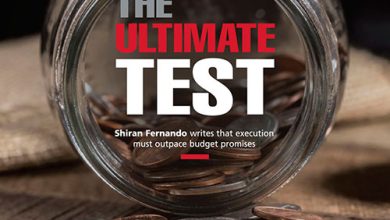US FED POLICY
THE INTEREST RATE CONUNDRUM
Samantha Amerasinghe weighs the impact of US interest rates on oil prices

Interest rates in the US were expected to drop this year with the first cut anticipated in June. However, the US Federal Reserve’s (Fed) narrative has turned towards concerns that the economy isn’t cooling as needed to keep inflation moving down to the Federal Open Market Committee’s (FOMC) two percent goal.
Progress on inflation in the US appears to have stalled and there are fears that it might even be accelerating. And the uncertainty around the timing of rate cuts is impacting oil prices.
Inflation has not been reducing as quickly as the Fed would like. Positive economic data flows in recent months has increased the likelihood that it will keep the policy rate high for longer with market expectations for only one rate cut, possibly in November.
 Though there was a glimmer of hope with inflation easing in April, it was only a modest reprieve. Officials have indicated that they would need to see several more months of good inflation data before being comfortable with easing monetary policy.
Though there was a glimmer of hope with inflation easing in April, it was only a modest reprieve. Officials have indicated that they would need to see several more months of good inflation data before being comfortable with easing monetary policy.
Contrary to the Fed’s stance, many central banks in Europe (Swiss, Swedish, Czech and Hungarian) have cut rates this year in response to falling inflation. However, among the world’s major economies, the Fed and Bank of England aren’t expected to cut rates until later this year, and the Bank of Japan is likely to continue to raise interest rates.
The European Central Bank (ECB) looks like it will be one of the first major central banks to cut rates despite fears that if it does so ahead of the Fed, the move could backfire. A 25 basis point cut on the benchmark deposit rate from a record high four percent seems likely as Eurozone inflation has fallen close to the bank’s two percent target.
A key reason why interest rates can be lowered sooner in the Eurozone than in the US is because inflation has fallen faster. This is partly due to the energy shock triggered by Russia’s invasion of Ukraine, which hit the Eurozone region harder than America.
The ECB’s move to cut rates is a clear sign that monetary policy has been effective in ensuring that inflation has remained close to the bank’s two percent target.
Eurozone inflation fell from above 10 percent at its peak in 2022 to a near three year low of 2.4 percent in April. Significant cost pressures due to rapid wages growth pushing up the price of services means the ECB will have to keep policy restricted until 2025.
Some analysts warn that if the ECB diverges from the Fed by cutting rates more aggressively, it could cause the euro to depreciate and push up inflation by raising the price of imports into the bloc. The euro rebounded after a six month low in April by a fifth against the US Dollar and it has remained high since then.
How far the ECB cuts rates overall will depend on its assessment of the so-called ‘neutral rate.’ This is the point at which savings and investments are balanced at desired levels, where output is at an economy’s potential and inflation is on target. The ECB will most likely set its policy rate at or slightly above two percent although this could be higher if a vigorous green transition to renewable energy or massive gains from generative AI prompts a surge in investment.
Oil prices have begun to drift lower amid ongoing concerns about the timing of the first interest rate cut in the US, the lower demand outlook, and market players’ cautious steps ahead of the meeting of the Organization of the Petroleum Exporting Countries (OPEC) and its allies.
Most analysts expect OPEC’s members to roll over production for a second time with a voluntary cut of 2.2 million barrels, as they try to shore up prices against higher US production and an uncertain economic outlook in China.
The voluntary cut introduced in November has reduced the group’s crude oil output by about 5.8 million barrels a day, which is some five percent of global supply, since the corresponding period in 2022.
Members of the extended oil cartel met in June to set production policy for the second half of the year. Given the failure to maintain the US$ 90 preferred price for most OPEC+ producers, the outlook for supply and demand has left little room for the organisation to increase production from July.
It was expected that a review of the baseline production capacity of its members would be conducted at the end of June and a decision made thereafter.
Investors will be on edge as it looks increasingly improbable that the Federal Reserve will be cutting interest rates in the summer while the uncertainty around the timing of monetary easing suggests that oil prices will stay below the 90 dollar mark for the rest of the year.





